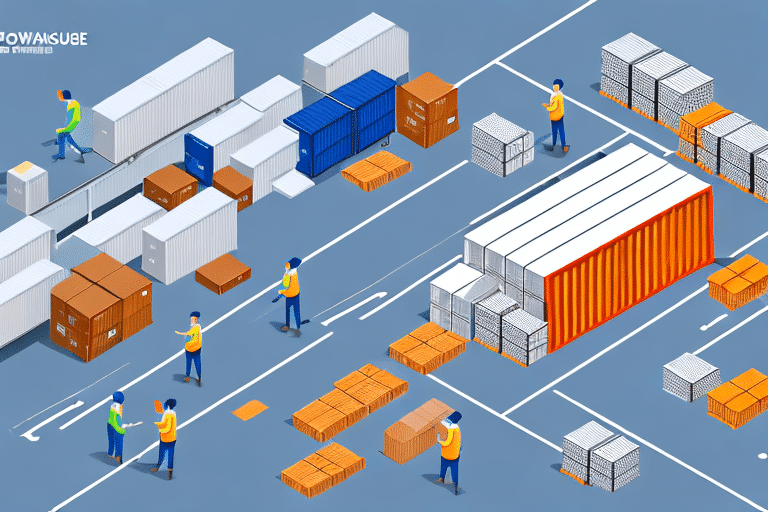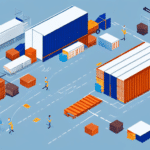How Consolidation Warehouses Can Streamline Your Business Operations
In today's highly competitive business environment, streamlining operations is essential for achieving success. Consolidation warehouses offer a strategic solution by combining shipments from multiple sources into larger, more efficient deliveries. This approach not only optimizes transportation but also enhances overall supply chain management.
Understanding Consolidation Warehousing
Definition and Basic Concepts
Consolidation warehousing involves merging shipments from various suppliers or business units into a single, larger shipment. This method can be applied within a single company or across multiple businesses, facilitating more efficient transportation and distribution.
Benefits of Consolidation Warehousing
- Cost Reduction: Leveraging economies of scale to negotiate better shipping rates.
- Environmental Sustainability: Decreasing the number of transport vehicles reduces carbon emissions.
- Improved Inventory Management: Centralized coordination of goods enhances tracking and storage efficiency.
Challenges in Consolidation Warehousing
- Coordination Complexity: Synchronizing multiple shipments requires effective communication and logistics planning.
- Risk of Damage or Loss: Increased handling during consolidation can elevate the chances of goods being damaged or lost.
Benefits of Using Consolidation Warehouses
Cost Reduction
By combining smaller shipments into larger ones, businesses can significantly reduce shipping fees. According to a study by the Statista Logistics Report 2023, companies that utilize consolidation warehousing can decrease transportation costs by up to 20%.
Improved Delivery Times
Consolidated shipments often follow more efficient routes with fewer stops, leading to faster delivery times. This efficiency not only enhances customer satisfaction but also reduces the likelihood of delays.
Enhanced Inventory Management
Centralizing shipments in a consolidation warehouse allows for better inventory tracking and management. Tools like inventory management software can provide real-time updates, minimizing the risk of overstocking or stockouts.
Environmental Sustainability
Reducing the number of transport vehicles on the road lowers carbon emissions. A report from the Environmental Protection Agency highlights that consolidation can contribute to significant environmental benefits by optimizing transportation logistics.
Security Enhancements
Consolidation warehouses are typically equipped with advanced security systems, including surveillance cameras and alarm systems. This ensures that goods are protected from theft or damage, providing peace of mind to businesses.
Cost Savings and Efficiency Improvements
Economies of Scale
Consolidating shipments allows businesses to take advantage of bulk shipping rates, leading to substantial cost savings. Large shipment volumes enable better negotiation with carriers, resulting in lower per-unit shipping costs.
Optimizing Logistics and Transportation
Effective consolidation reduces trucker waiting times and fuel consumption. According to the Bureau of Labor Statistics, optimizing transportation routes through consolidation can lower fuel costs by approximately 15%.
Inventory Management Benefits
With consolidated shipments, businesses can monitor inventory levels more accurately. This leads to improved demand forecasting and ensures that products are available when needed, enhancing overall operational efficiency.
Consolidation Warehouses for Small Businesses
Space Optimization
Small businesses with limited storage space benefit significantly from consolidation warehouses. By consolidating shipments, these businesses can maximize their existing storage facilities and reduce the need for multiple warehouse locations.
Economies of Scale for Small Businesses
Even smaller enterprises can enjoy cost savings by pooling shipments with other businesses. This collective approach enables access to reduced shipping rates and lower handling fees, enhancing profitability.
Value-Added Services
Many consolidation warehouses offer additional services such as packaging, labeling, and quality control. These services help small businesses streamline their operations, allowing them to focus on core activities and growth.
Technology in Consolidation Warehousing
Automation and Robotics
Automation technologies, including robotic systems and automated storage and retrieval systems (AS/RS), streamline the packing, sorting, and shipping processes. These advancements increase efficiency and reduce human error.
Internet of Things (IoT) and Real-Time Tracking
IoT devices and sensors provide real-time tracking of goods within the warehouse. This technology ensures accurate inventory levels and helps prevent loss or damage by monitoring environmental conditions like temperature and humidity.
Artificial Intelligence (AI) and Machine Learning (ML)
AI and ML algorithms analyze data to optimize logistics, predict demand, and identify trends. These insights enable businesses to make informed decisions, reduce costs, and enhance supply chain efficiency.
Virtual and Augmented Reality for Training
Virtual reality (VR) simulations offer hands-on training for warehouse workers, improving their skills and safety. Augmented reality (AR) provides real-time information and instructions, reducing the likelihood of errors and accidents.
Choosing the Right Consolidation Warehouse
Factors to Consider
- Cost: Evaluate the pricing structure to ensure it fits within your budget.
- Location: Proximity to your suppliers and customers can impact transportation efficiency.
- Range of Services: Assess the additional services offered, such as packaging, labeling, and customs clearance.
Security and Flexibility
Ensure the warehouse has robust security measures, including CCTV, security personnel, and access control systems. Additionally, the facility should offer flexibility to adapt to your changing business needs, such as seasonal demand fluctuations.
Capacity and Service Range
Choose a warehouse that can accommodate your current inventory levels and has the capacity to scale as your business grows. A wide range of services ensures that all your logistical needs are met under one roof.
Best Practices and Future Trends
Inventory Management Best Practices
- Implement Inventory Management Software: Utilize software solutions to track inventory in real-time.
- Conduct Regular Inventory Counts: Perform periodic physical counts to ensure accuracy.
- Train Staff Effectively: Ensure employees are well-trained in inventory handling and software usage.
Overcoming Implementation Challenges
Successful implementation of consolidation warehousing requires addressing challenges such as coordination complexity and transportation costs. Partnering with experienced warehouses and investing in the right technology can mitigate these issues.
Future Innovations in Consolidation Warehousing
The future of consolidation warehousing is poised for significant advancements. Predictive analytics will further optimize logistics, while autonomous drones and electric vehicles are set to revolutionize delivery processes. Additionally, the integration of AI and ML will continue to enhance data analysis, leading to smarter and more efficient supply chains.
Conclusion
Consolidation warehouses are pivotal in streamlining business operations, reducing costs, and enhancing efficiency. By consolidating shipments and leveraging advanced technologies, businesses of all sizes can optimize their logistics operations and gain a competitive edge. Embracing best practices and staying abreast of future trends will ensure that your business remains agile and resilient in an ever-evolving market.




















